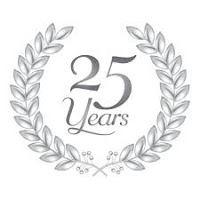When we look around and see the lack of consensus about Book of Mormon geography, there are a few key inflection points that have put us on the course we’re on today; i.e., rifts among LDS scholars and educators and confusion among members of the Church and investigators.
A major inflection point occurred in 1992, when one of the biggest disasters in Book of Mormon studies was published. That makes this year, 2017, the 25th anniversary.
For 25 years now, members of the Church–almost an entire generation–have been taught a fundamentally flawed concept about the Book of Mormon.
I’m referring, of course, to the Encyclopedia of Mormonism (EOM) and its infamous article about Cumorah.
You can read it here. http://eom.byu.edu/index.php/Cumorah
It contains this unbelievably self-serving and misleading paragraph (with my comments in red):
“This annual pageant has reinforced the common assumption that Moroni buried the plates of Mormon in the same hill where his father had buried the other plates, thus equating this New York hill with the Book of Mormon Cumorah. [Of course, it was the two men who actually visited Mormon’s depository inside the New York Cumorah–Joseph Smith and Oliver Cowdery–who declared it was a fact that this was the Cumorah of Mormon 6:6. It was anything but an “assumption.” Yet this article in EOM doesn’t even mention Letter VII.]
“Because the New York site does not readily fit the Book of Mormon description of Book of Mormon geography, [the New York hill exactly fits the description in the text. What neither New York nor the text fits is the Mesomerican setting, with its jungles, jade, jaguars, and Mayan temples. Not to mention volcanoes. To avoid the obvious problems with Mesoamerica, Brother Palmer and like-minded LDS scholars and educators concocted a set of “requirements” for Cumorah that are not based on the text but are designed to limit the comical search for Cumorah to Mesoamerica.]
“Latter-day Saints have looked for other possible explanations and locations, including Mesoamerica. [See? Instead of believing Joseph and Oliver, these LDS scholars and educators look anywhere but New York.]
“Although some have identified possible sites that may seem to fit better (Palmer), there are no conclusive connections between the Book of Mormon text and any specific site that has been suggested.”
_______________
Brother Palmer, of course, cites his own book, In Search of Cumorah, to justify the assertion that Joseph Smith and Oliver Cowdery were, let’s say, “mistaken” about the actual location of the real Cumorah.
Ever since, our LDS scholars and educators have referred to this article to support their teaching of the Mesoamerican and two-Cumorahs theories.
This article was a major inflection point that has led to the ongoing confusion and problems that Mesomania have caused.
But fortunately, inflection points not only cause diversions; they can also enable course corrections.
In our day, there is another inflection point: the rediscovery of Letter VII and its context, including how often Joseph Smith endorsed it after it was published.
If we can only persuade LDS scholars and educators to take this opportunity to change course and return to what Joseph and Oliver (and all their contemporaries and successors) taught, we’ll get back on course and eventually repair the damage caused by the 1992 disaster.
Source: Book of Mormon Concensus


